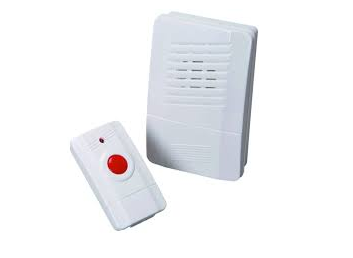Doorbells are important security appliances in the home. With the growth of technology, you don’t have to install cables in your house to install a doorbell. It is now possible a wireless doorbell that is easy to install but still performs the same function as the traditional doorbells. When looking for a wireless doorbell, there are features that you should check. A wireless doorbell is all about features, and the bell that you will choose will make all the difference when it comes to selecting a doorbell.
How to choose a wireless doorbell :
Distance of operation
The distance of the sound is important when choosing a doorbell for your house. You need to determine aspects like the size of your house and also the number of walls in the house. If you have a big house, then you need a doorbell with a wide range. The standard wireless doorbell will work on a 150ft distance. However, other types of doorbells will go beyond this range depending on your needs. You might want to consider the size of your house before you buy a wireless doorbell.
Type of technology
The type of technology that is used to run your wireless doorbell is very important when making a choice. There are wireless doorbells that can be run using a Wi-Fi connection, and others can be controlled by a mobile device using smart technology. All you need to do is to choose the right technology for you.
Easy to install
When choosing a wireless doorbell, consider selecting one that is easy to install. Ease of installation is important because you don’t have to call an installation expert and spend more money. For wireless doorbells, you don’t need any cables in your house, and all you have to do is to place the doorbell in a strategic position where everyone can see it.
Illumination option
Every doorbell doesn’t have to ring whenever someone is on the door. It is important to have a door bell with a light illumination indicator as opposed to ringing all the time. An illumination indicator will be helpful especially when you have a baby sleeping in the house, and you don’t need noise from the doorbell.
Style
The style might not be important to many people, but it is still something worth considering when looking for a doorbell. A good doorbell should be stylish to match your décor.
read this :
1
Pick a doorbell that is heat and water resistant. While it seems like all doorbells should be able to withstand varying weather conditions, that’s unfortunately not the case. Be sure to choose one that will last throughout the seasons and won’t be damaged by fluctuating temperatures, rain, or snow.[1]
- Look for a bell with packaging that specifically states it is weather-resistant or weatherproof.
2
Choose a doorbell with varying frequencies. Because wireless bells use radio waves to transmit the signal, you should pick one that can operate on multiple frequencies. This will ensure that neither your neighbor’s wireless doorbell nor their garage door opener signal your own doorbell to chime. If you find that there is interference, simply change the privacy code on the bell to adjust the frequency.
3
Ensure the range is sufficient. The size of your home will determine the range that you’ll need. A standard wireless doorbell has a range of 150 feet (46 m). If the interior of your home has a distance greater than this, you’ll need to choose a bell with a wider range. Interior walls can also interfere with the range of a bell, so take your room configuration into account.[3]
- If you have your heart set on a certain bell, but the range is insufficient, buy an extender to increase the range so that it can be heard throughout your home.
4
Decide how many receivers you would like. If you have a large home, you may want to place receivers in more than one location. For instance, you may want one on every level of your home, or you may wish to place an additional receiver somewhere where it may be difficult to hear the main receiver, such as the laundry room.
5
Pick between battery-operated or electric power. Wireless doorbells need a power source, and you have a choice of what kind of source you prefer. If the location you’d like to put the bell and receiver are near outlets, then you can go with an electric bell. If there’s not an outlet handy, you may want to choose a battery-operated doorbell—just be sure to stock up on extra batteries and change them out when needed.

Comments
Post a Comment